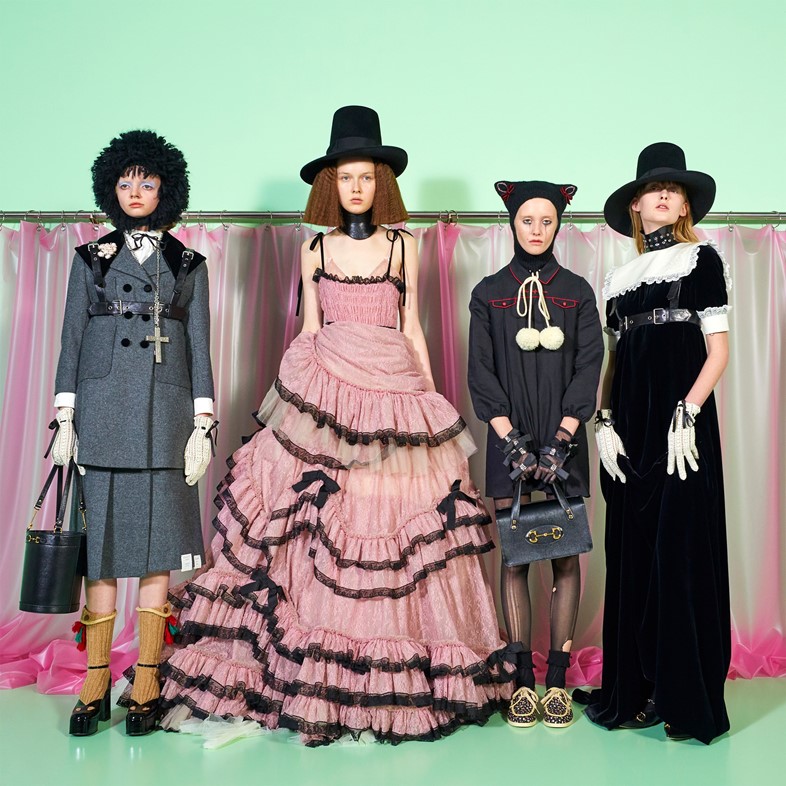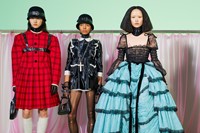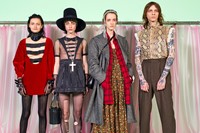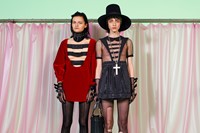At Gucci’s Autumn/Winter 2020 show, Alessandro Michele took viewers backstage, celebrating – and inverting – fashion’s most sacred ritual: the runway show
Alessandro Michele’s tenure at Gucci has come with its own unique scenography: the elaborately constructed, and oftentimes surreal, sets that the Italian designer conjures to backdrop his equally transporting collections. There have been Lynchian boudoirs clad in pink velvet, a ‘post-human’ operating theatre, a runway scattered with film set-sized replications of Rome’s ancient monuments – and all that without leaving Milan (though he has also done that too, with cruise shows in London, New York, Arles, Rome and, later this year, San Francisco).
“We all come for this ritual that is almost religious,” Michele said of the phenomenon of the runway show, speaking after Gucci Autumn/Winter 2020 show, held this week in Milan. “We say ‘one day I want to stop and do something else,’ but that day never comes. I’m 48 years old and have not found something else.”
So, to celebrate this unique and inescapable institution – and the house’s return to being Milan Fashion Week’s opening show – he turned fashion’s most sacred ritual inside out, and pulled back the proverbial curtain: backstage became the main performance, the hair and make-up artists, dressers and seamstresses, models in their robes (and even Michele himself, who milled about as attendees arrived) became the mise en scène. This was the milieu through which attendees entered, led through a backstage space (or at least, a recreation of one) whereby robed models rowed up in front of mirrors, ready to be primped for the runway. “I tried to place outside what is generally inside this circle,” Michele explained.
From there, it was through to the showspace proper, where a glass-fronted carousel slowly circled underneath a vast ticking metronome (it echoed a similarly rhythmic pendulum at the men’s show earlier this year, backgrounding a collection which explored the passing of time). Within it, another backstage scene unfolded: models were dressed in the collections’ looks by a Gucci-clad crew, amid clothing rails and look boards. Slowly, the models came to line up around the carousel’s edges, allowing the audience time to ponder the looks. “I wanted to say fashion is a complex mechanism and something sacred,” Michele said.
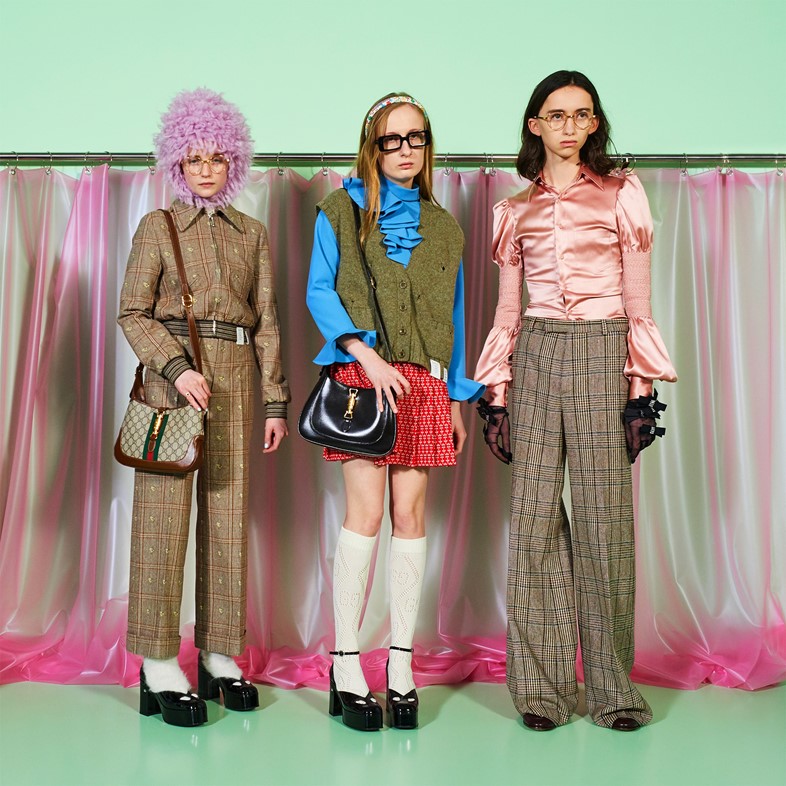
The collection itself was yet more proof of Michele’s own brand of alchemy; an ability to hurtle through epochs and eras, continents and cultures, without ever creating clothing that feels anything less than primed for our current moment (this collection travelled back centuries, conjuring ruffled Southern Belle-style confections and puritanical capotain hats into the mix). After the show, he said that the collection had begun with an exploration of childhood, a continuing theme from his menswear show in January. Here, that meant baby-doll dresses and pinafores, Sunday-best swing coats and lacy collars (though, as ever, tempered with flourishes of kink – harnesses, chokers, exposed underwear and the like).
“We have to offer millions of justifications for what we wear, what we say,” Michele pondered after the show. “The childish world,” he concluded, “is perfect. It doesn’t have to justify anything.” Why should grown-ups not be able to do the same? At Gucci, Michele continues to forge a brave new world – or indeed, an entire universe – where we can all be liberated, at least momentarily, by his fantastical clothes.
